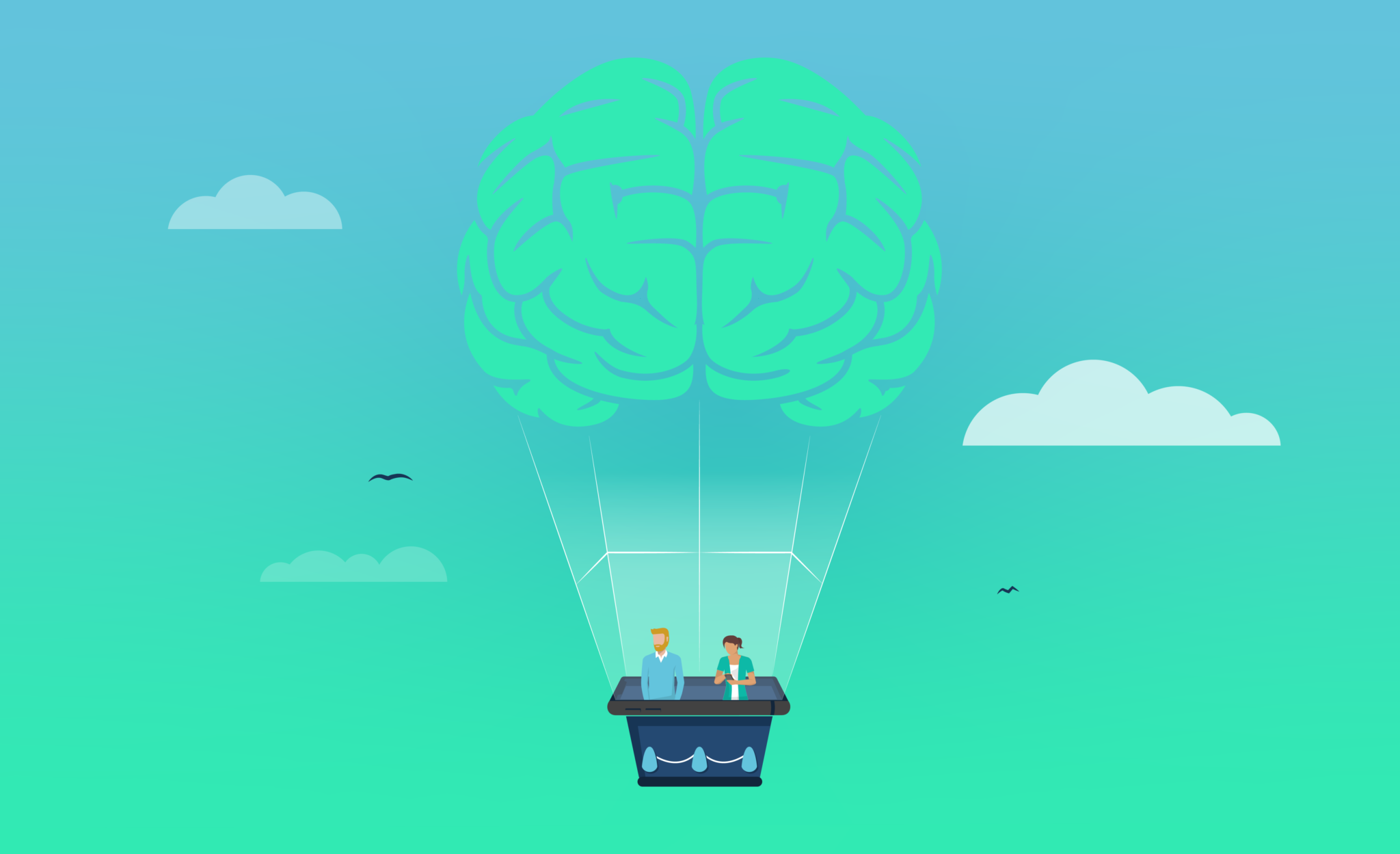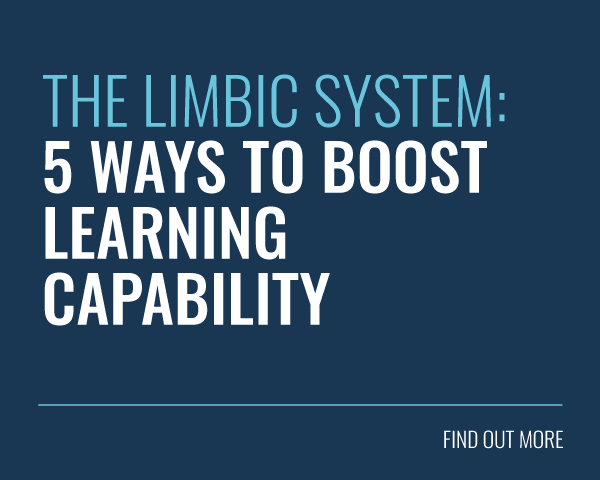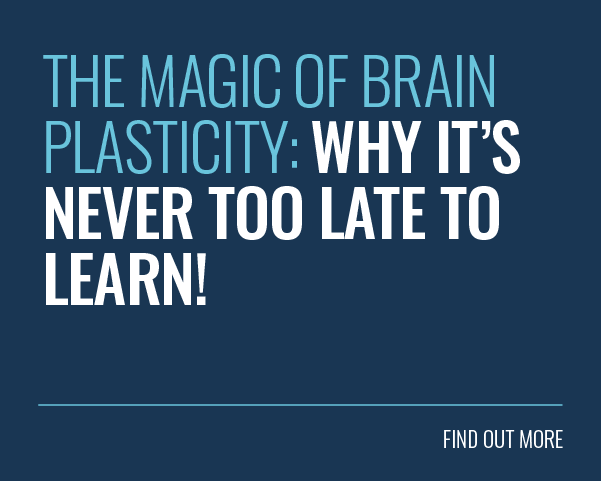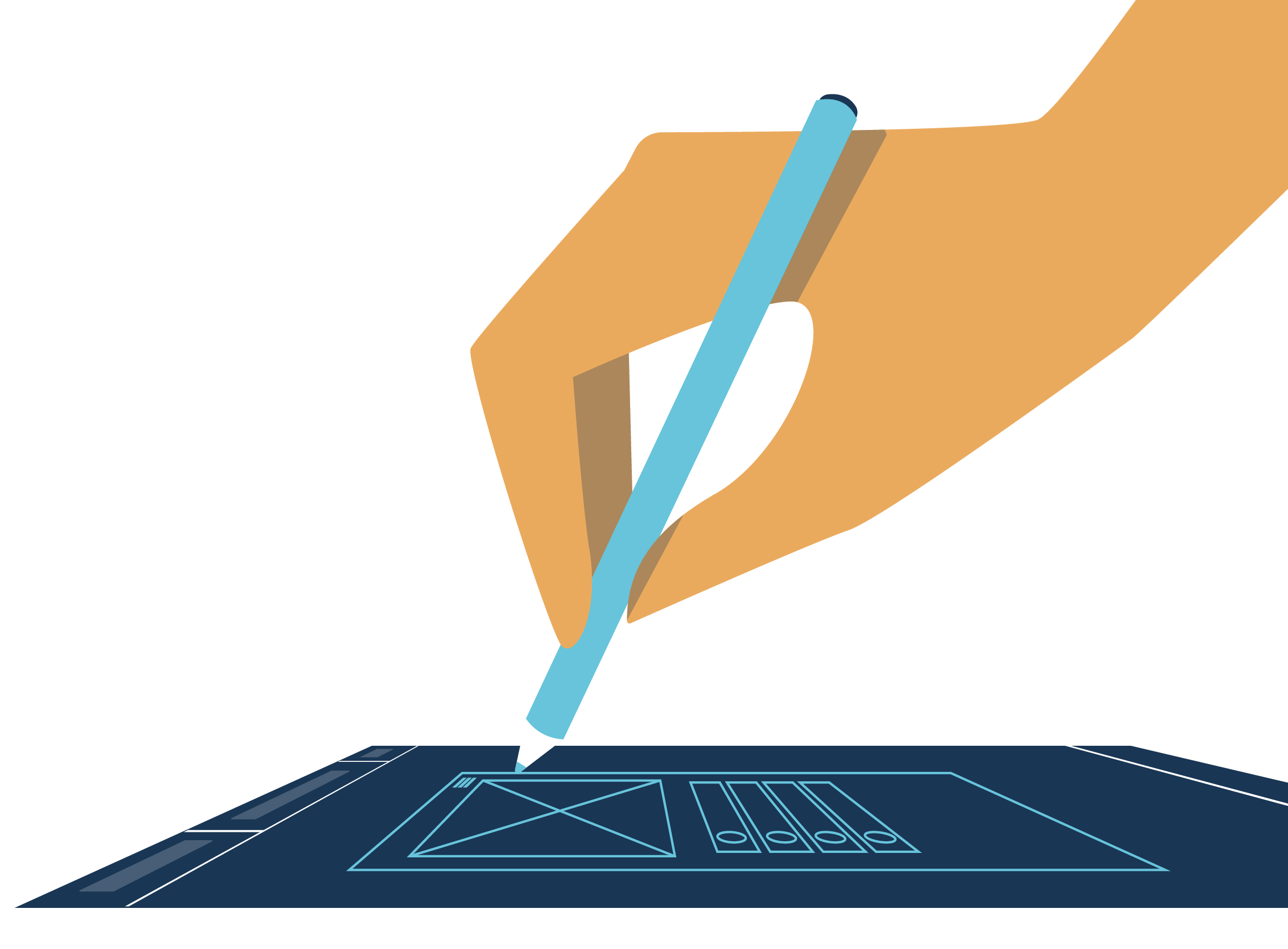 Have you ever wondered what happens in our brains when we create and innovate? Then you are in luck. Today, we’ll be exploring the science of creativity and innovation!
Have you ever wondered what happens in our brains when we create and innovate? Then you are in luck. Today, we’ll be exploring the science of creativity and innovation!
By understanding how the brain functions when we are creative, you’ll be better placed to generate new ideas, solve complex problems and innovate.
With this in mind, we’ll explore creativity and its history before diving into the fascinating realm of neuroscience. Are you ready to gain insights into the neuroscience of creativity and innovation? Then let’s go!
What Is Creativity?
Steve Jobs once famously stated that “Creativity is just connecting things. When you ask creative people how they did something, they feel a little guilty because they didn’t really do it, they just saw something. It seemed obvious to them after a while. That’s because they were able to connect experiences they’ve had and synthesise new things”.
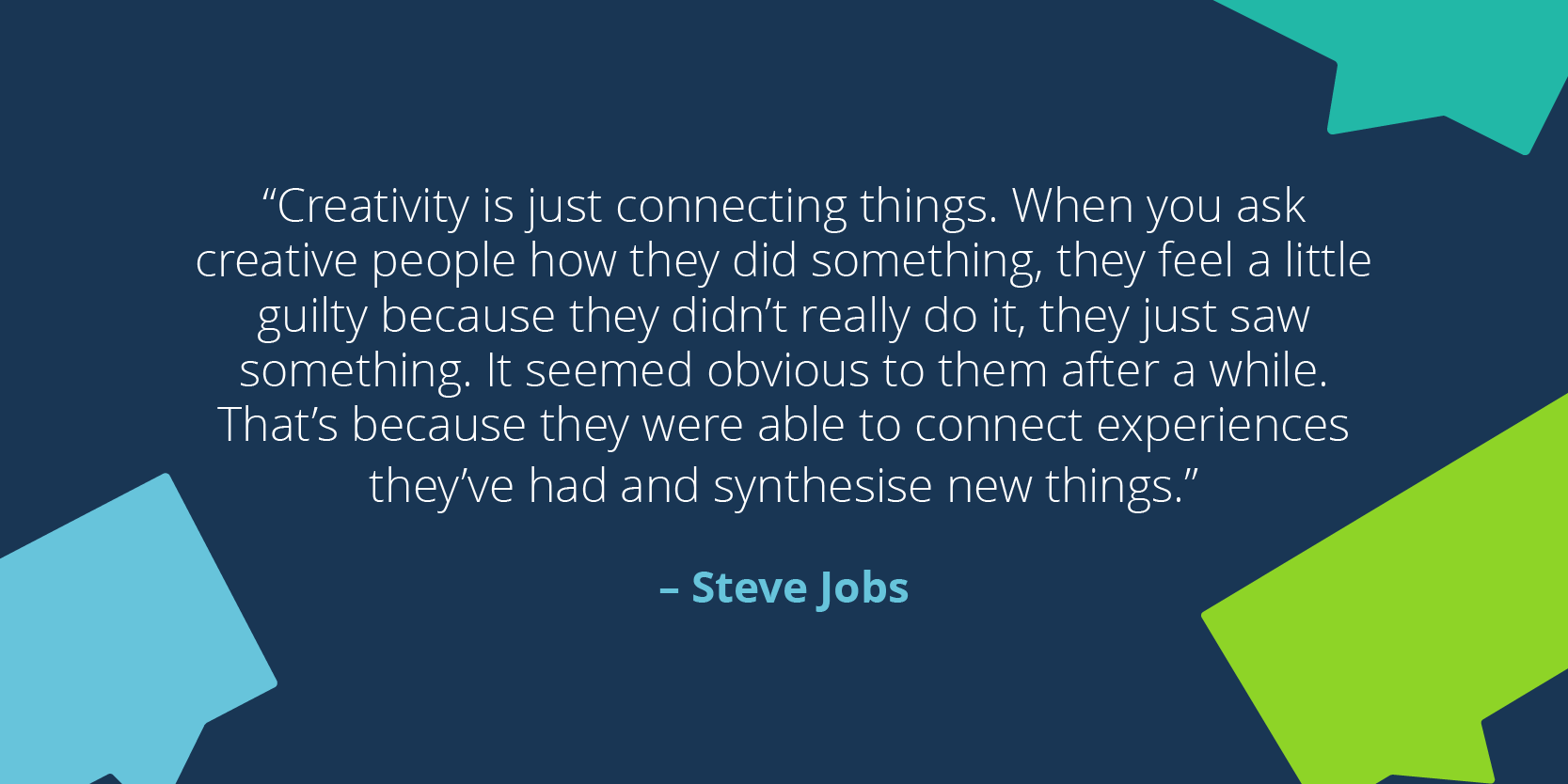
While creativity is a complex and multifaceted concept, it’s typically understood to be one’s ability to come up with novel and original ideas, solutions or expressions in order to solve a problem in a specific socio-cultural context.
Creativity is a curious and nebulous creature. This makes it awfully difficult to define. Indeed, there is a surprising lack of consensus when it comes to its definition. The way we think about creativity can differ vastly from one individual to the next.
When thinking about creativity, we often consider the realm of art, music or design. However, creativity is a fundamental human trait that can be applied to various fields.
In fact, one of the biggest challenges is to have a definition that can be applied across all forms of creativity. This definition needs to hold true whether the ‘object’ is a work of art, scientific theory, strategy plan or something else.
Despite this, there are some key characteristics linked to creativity. These are typically linked to our ability to combine existing knowledge, skills and experiences to produce something new, original, and innovative:
- Originality: Coming up with ideas that are fresh, unusual and distinct from existing concepts or solutions.
- Flexibility: Thinking beyond conventional boundaries to explore different perspectives, approaches and possibilities.
- Problem-solving: Applying creative thinking to address challenges, find solutions and overcome issues.
- Fluency: The ability to generate various ideas or solutions within a set timeframe.
- Risk-taking: Willingly venturing into unfamiliar territory, taking chances and embracing uncertainty to pursue novel ideas.
- Elaboration: Refining and developing the initial idea into more detailed and concrete ideas.
The History of Creativity
 The concept of creativity has evolved over time. Indeed, its perception and recognition have varied across different cultures and historical periods.
The concept of creativity has evolved over time. Indeed, its perception and recognition have varied across different cultures and historical periods.
Most ancient cultures did not have a specific term or concept that directly corresponds to our modern understanding of creativity. However, it would be an oversimplification to say that they completely lacked the notion.
For example, ancient Greek didn’t have the verb ‘to create’ or the term ‘creator’, but they valued various forms of artistic expression. This included poetry, music, sculpture and theatre. These are activities that involve innovative use of materials, techniques and ideas.
It wasn’t until the Renaissance, spanning roughly from the 14th to the 17th century, that creativity began to be explicitly discussed and recognised. At this stage, creativity was thought to be wielded by ‘great men’ — those possessed with innate genius and artistic talent.
We only started to consider creativity and imagination as key elements of human cognition in the Age of Enlightenment (starting from the late 17th century). Thinkers like Immanuel Kant and Jean-Jacques Rousseau helped to highlight the importance of imagination and creativity in forming ideas.
As a result, our understanding of creativity started to shift from purely artistic activities to scientific discoveries, philosophical insights and problem-solving.
The Creative Brain in Action
Have you ever heard that the right side of your brain is analytical, whereas the left side is your creative brain? We certainly have!
However, research into neuroscience has debunked this myth. Afterall, the right-brain / left-brain distinction doesn’t offer us the full picture of how our brain implements creativity.
In fact, creativity doesn’t only involve a single brain region or a single side of the brain. Instead, creativity consists of many interacting cognitive processes, both conscious and unconscious, that work together. These processes include:
- Idea generation (formulating ideas based on existing knowledge)
- Divergent thinking (generating multiple solutions to a problem)
- Convergent thinking (evaluating and selecting one well-defined solution to a problem)
- Incubation (processing information unconsciously)
- Associative thinking (making connections between seemingly unrelated concepts)
These different processes help to explain why it’s so difficult to define creativity. After all, creativity is a concept that spans various activities and thoughts.
As such, the creative process can look very different depending on what kind of creative activity or thought process we engage in. As a result, different brain regions are enrolled to handle the task.
The Neuroscience of Creativity
Our understanding of the neuroscience of creativity is still evolving. In fact, the research is limited, mainly because it’s hard to prompt creativity in order to study it successfully.
In addition, creativity is such a vast concept that studying it comprehensively isn’t easy. After all, simply prompting certain creative behaviour doesn’t necessarily give us meaningful data about the neuroscience of creativity as a whole.
Despite this, we know that several brain regions and processes are involved in creativity:
1. Prefrontal Cortex (PFC)
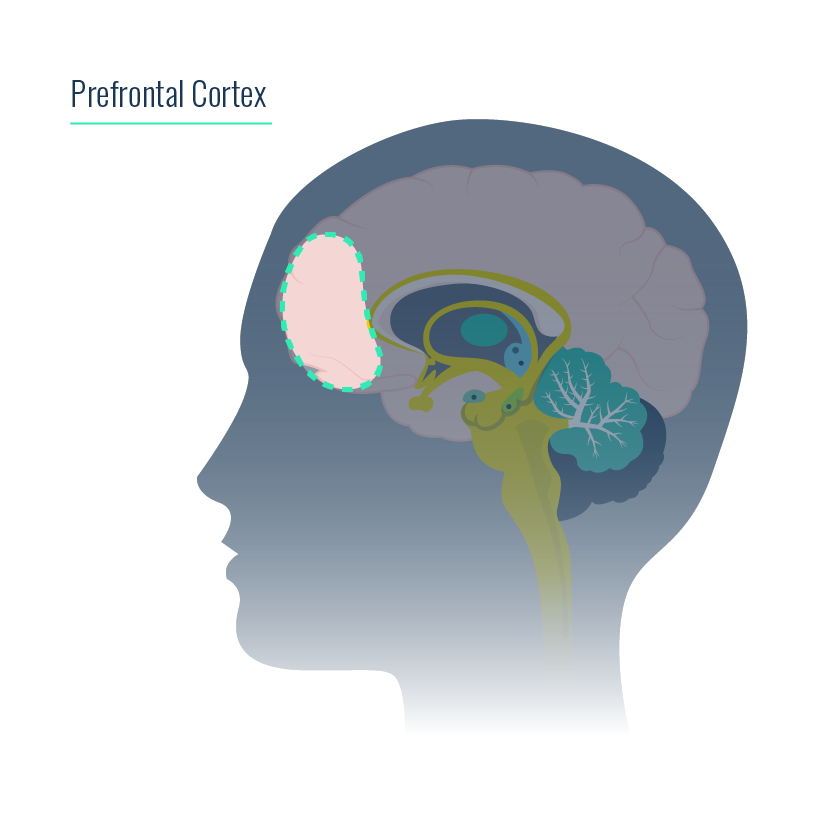 Our prefrontal cortex is located at the front of the frontal lobe. It plays an essential role in regulating and controlling human behaviour.
Our prefrontal cortex is located at the front of the frontal lobe. It plays an essential role in regulating and controlling human behaviour.
It’s involved in higher-order cognitive functions, like decision-making, problem-solving, planning, attention and working memory.
With this in mind, it’s easy to see how our prefrontal cortex is involved in any creative processes. After all, it enables us to generate ideas, practise divergent thinking and switch between different perspectives and problem-solving strategies.
2. Default Mode Network (DMN)
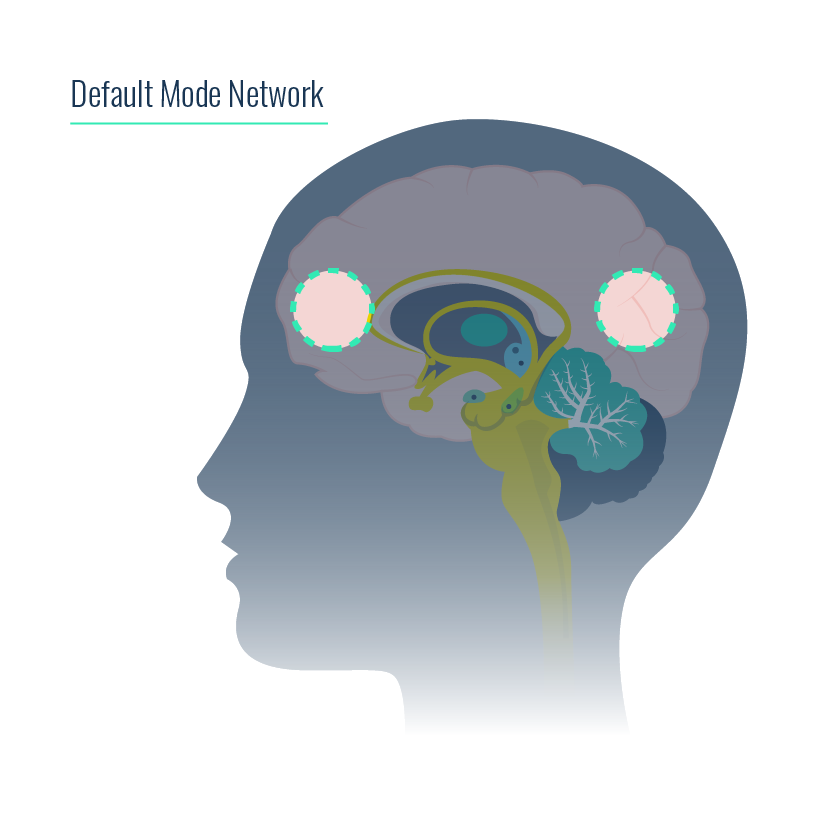 The default mode network is a network of brain regions that are consistently active during our passive moments. It’s also active during directed tasks that require us to remember past events or imagine upcoming events.
The default mode network is a network of brain regions that are consistently active during our passive moments. It’s also active during directed tasks that require us to remember past events or imagine upcoming events.
The default mode network consists of the medial prefrontal cortex, posterior cingulate cortex and regions of the lateral parietal cortex.
It’s associated with self-referential thinking, introspection, daydreaming and mind-wandering. While these functions are typically associated with negative actions, they’re essential for creativity.
After all, when the DMN becomes active, your brain can generate ideas by creating connections between seemingly unrelated concepts. These spontaneous and internally focused thoughts can contribute to creative insights.
3. Frontoparietal Network
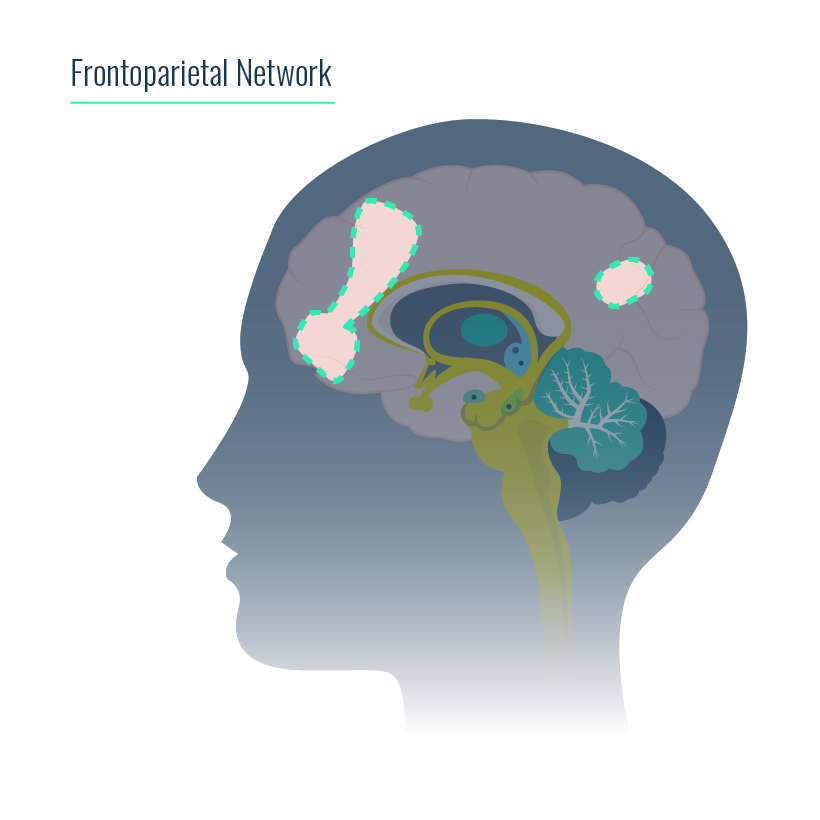 The frontoparietal network, often referred to as the central executive network, is another brain network involved in creativity.
The frontoparietal network, often referred to as the central executive network, is another brain network involved in creativity.
This large-scale network is composed of the dorsolateral prefrontal cortex and posterior parietal cortex. These are located around the parietal lobe, which is one of the four major lobes of the brain.
The frontoparietal network is responsible for our cognitive control and attentional processes. As such, it’s heavily involved in operating our working memory.
It plays a key role in overcoming cognitive constraints and inhibiting our habitual responses. This, in turn, allows us to think more flexibly and unconventionally.
4. Dopamine system
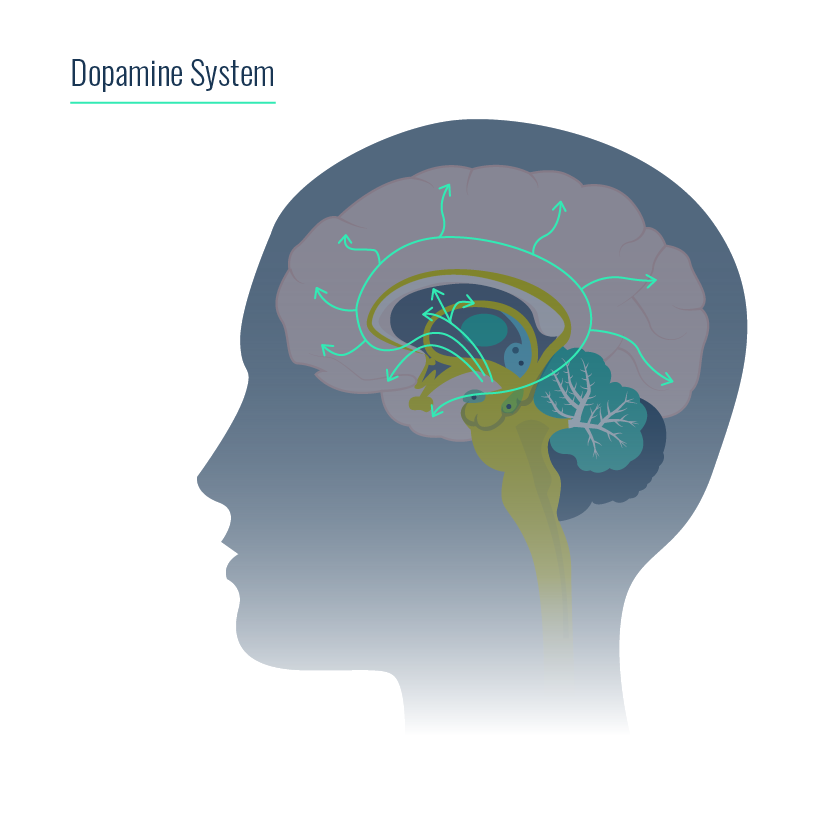 The dopamine system refers to a group of neurons in the brain that use the neurotransmitter dopamine to communicate.
The dopamine system refers to a group of neurons in the brain that use the neurotransmitter dopamine to communicate.
Dopamine is a chemical messenger that plays a crucial role in various physiological processes, like motivation, movement and learning. It’s linked to feelings of pleasure, reward and satisfaction. In fact, dopamine is often referred to as the feel-good hormone.
The dopamine system covers various brain regions. These regions contain neurons that produce dopamine and then project the neurotransmitter to different parts of the brain. This forms neural pathways.
Studies have shown that increased dopamine activity in certain brain regions is linked to creativity and divergent thinking.
5. Neural Plasticity
Neural plasticity, sometimes called brain plasticity or neuroplasticity, refers to our brain’s ability to change and adapt. In fact, our brains change throughout our entire lives in response to internal and external stimuli, experiences and learning.
Neural plasticity is highly relevant to creativity, as it provides the foundation for our brains to generate unique ideas, think flexibly and engage in problem-solving.
After all, neural plasticity allows the brain to form new synaptic connections and reorganise existing ones. This means that you can integrate information from different brain regions.
The human brain is also able to reorganise its neural networks and modify its connections. This, in turn, creates the cognitive flexibility that is essential for adaptive and creative thinking.
Ultimately, neuroplasticity means that your brain is capable of shifting perspectives and considering multiple solutions.
Why Does Creativity Matter?
Creativity is an important part of human development. Let’s take a look at some of the reasons why creativity matters!
1. Problem-Solving
Creativity is at the core of innovation and problem-solving. After all, it enables us to come up with new ideas and perspectives.
This, in turn, helps you to drive innovation, such as technological advancements, scientific discoveries and artistic expressions.
2. Adaptability
The business world is ever-evolving and innovations keep popping up left, right and centre. That’s why your organisation needs to stay agile and flexible in order to compete.
Creative employees can think outside the box, adapt to new circumstances and find innovative approaches. This helps them to navigate change and challenges more effectively.
As a result, you ensure your intellectual capital stays resilient and relevant.
3. Personal Growth and Wellbeing
As we know, creativity extends to activities like painting or playing an instrument. This kind of artistic creativity can be deeply fulfilling and contribute to personal growth.
Harnessing our creativity allows us to explore different passions, express emotions and develop a sense of purpose and identity. As such, creativity also provides avenues for self-discovery, expression and personal fulfilment.
4. Communication
Creativity is a powerful tool for communication and expression. After all, individuals can convey complex emotions, ideas and experiences better when they can think creatively. In addition, creativity can promote understanding and empathy.
Creative communication engages through storytelling, nonverbal cues, metaphorical language, and active participation. This facilitates deeper connections.
This is essential in organisations to ensure effective cross-departmental collaboration and transparent communication.
5. Critical Thinking
Creativity stimulates critical thinking, curiosity and open-mindedness. It challenges assumptions and encourages individuals to explore and push boundaries. This helps them to question established norms and consider different perspectives.
Critical thinking is business critical as it allows individuals and organisations to make more informed decisions, solve complex problems and adapt to rapidly changing workplace environments.
Neuroscience and Innovation
We know that creativity boosts our ability to generate new and innovative ideas or solutions to problems. As a result, it’s a key driver of innovation.
With this in mind, organisations need to foster creativity in their employees in order to stay competitive and adapt to changing market conditions.
By understanding the neuroscience of creativity, you can help your organisation to foster innovation! Let’s explore ways to encourage innovation with neuroscience in mind.
1. Encourage Divergent Thinking
Divergent thinking, also called lateral thinking, is our ability to generate multiple solutions to a single problem. As such, it’s often a non-restricted, non-linear and free-flowing chain of thoughts.
You can encourage divergent thinking by creating an environment where your team feels comfortable expressing ideas without fear, criticism or rejection.
Hosting, for example, brainstorming sessions and open-ended problem-solving exercises will help you to promote divergent thinking.
You should also promote neural plasticity by encouraging employees to learn new skills or engage in creative pursuits.
2. Provide Opportunities for Incubation
Incubation is the process of letting our ideas sit and develop over time. By setting the problem aside and allowing it to ‘incubate’ in the unconscious mind, the brain can make new connections and come up with innovative solutions.
You can encourage incubative thinking by allowing your employees to take regular breaks. These breaks allow their ideas to develop.
In fact, research shows that the unconscious mind is highly active when it comes to problem-solving. Taking breaks or engaging in unrelated activities can actually lead to increased creativity.
3. Promote Cognitive Flexibility
Cognitive flexibility refers to our ability to shift between different cognitive processes and adapt to changing circumstances.
You can promote cognitive flexibility by providing L&D opportunities that encourage your teams to think outside of their usual roles and responsibilities. This helps them to develop new neural pathways and enhance their cognitive flexibility.
As such, you should create a culture of diverse thinking to encourage your employees to share their perspectives and ideas. As a result, they can become more innovative and adaptable, which will drive greater success.
Strategies for Enhancing Creativity in Your Organisation
Back in 1968, a study by George Land revealed that we are naturally creative as kids but often grow up to become uncreative.
This raises the question, why are children more creative than adults? Land suggested that our creativity gets buried under the rules and regulations thrust upon us by our educational system and corporate environments.
However, you’ll be glad to hear that creativity can be taught and encouraged! In fact, there are various strategies you can use to enhance creativity and prompt innovation in your organisation.
1. Focus on Your Company Culture
Your organisational culture plays an important role when it comes to enhancing creativity and innovation. After all, if your corporate culture has creativity and innovation as its core, it’s something your employees will live and breathe on a daily basis.
You have various ways to forge a culture that fosters creativity. For example, you should encourage experimentation, iteration and refinement during any project or creative journey.
This will help your employees to enjoy the creative process itself rather than solely focus on the outcomes. As a result, they will regularly engage in creative thinking, planning or activities which cultivate creative habits.
In addition, create an innovation-friendly structure. This could include allocating resources for specific innovation projects, introducing mechanics for evaluating and implementing new ideas, or even creating teams that focus on innovation.
2. Embrace Diversity
Diversity in teams means diverse perspectives. You should focus on embracing diverse ideas, cultures and viewpoints that can lead to more creativity and better solutions.
After all, your employees can bounce ideas off of each other and feed into their colleagues’ ideas and thoughts. As such, make sure your team consists of people from different backgrounds.
3. Create a Continuous Learning Culture
Your learning and development (L&D) initiatives can help you to foster creativity and innovation across your organisation. With this in mind, you should strive to create a
culture of continuous improvement.
Provide opportunities for your employees to attend workshops, conferences or training programmes where they can expand their knowledge and skills.
By encouraging ongoing development, your employees can learn from case studies, relevant examples, creative campaigns, scenarios and more.
However, make sure you leave time for reflection. Taking time away from the task at hand ensures your learners have the space they need for unconscious processing.
This is a big part of creativity. It allows your brain to process information unconsciously and make connections between concepts.
4. Implement Social Learning
As a part of your learning culture, you should provide opportunities for social learning.
On top of exposing your employees to diverse perspectives, creativity often flourishes in collaborative environments.
In fact, social learning enables collaborative problem-solving as learners get opportunities to work together and share ideas. They can then leverage their collective strengths and come up with innovative solutions to specific issues.
What’s more, social learning exposes individuals to the achievements and success stories of others. This might well inspire them to push their own boundaries.
5. Promote Autonomy
As we explored earlier, creativity is hard to prompt. While we can start participating in a creative activity, this isn’t necessarily ‘being’ creative.
However, offering a flexible environment where employees have the freedom to explore and express themselves leaves room for creativity.
Similarly, if they have autonomy to make decisions, individuals can take ownership of their projects. As a result, they are more likely to experiment and drive towards innovation through trial and error.
6. Provide Feedback
Many people think of creativity simply as participating in an art form. As a result, they don’t necessarily realise how creative they actually are.
You should incorporate feedback and constructive criticism as a part of your culture and L&D initiatives. Feedback from peers and mentors can help your learners to refine their ideas.
As a result, employees can identify their strengths, weaknesses and any areas for improvement. Ultimately, this can enhance their creative output.
Feedback can also help your employees to think more critically and consider alternative perspectives. This helps them to review and refine their innovative solutions.
7. Encourage Cross-Functional Collaboration
Encouraging collaboration and cross-functional teamwork helps you to stimulate creativity. By implementing group projects or brainstorming sessions, you can bring together a diverse group of people.
This, in turn, helps individuals to see their context from different perspectives. This can often lead to breakthroughs and new ways of thinking.
8. Support Risk-Taking
Most organisations shy away from encouraging their employees to take risks. After all, the end result may not be desirable.
However, creating an environment where employees feel safe to take risks and embrace failure is a great learning opportunity. This helps them to learn from their mistakes and use this previous experience to be more successful in the future.
9. Provide Plenty of Resources
Make sure to provide enough resources, materials and tools for your employees to enable creative exploration. Ensure there is a central repository for your learning content.
However, just providing resources is not enough. You need to encourage individuals to explore, experiment and engage with the resources. This will help to expand their creative thinking and enable them to find their unique voice.
The Final Words
Understanding the neuroscience of creativity and innovation allows you to unlock your creative potential. The same holds true for your employees.
From boosting the impact of your L&D initiatives to enhancing innovation and problem-solving, creativity will put your organisation in a better position.
After all, you’ll be better equipped to keep up with the competition and adapt to changing market conditions. There’s also a good chance your employees will be happier and more fulfilled as well!
Are you looking to boost your training strategy with neuroscience in mind? We have just the right resource for you! Click the link below to get your copy.



